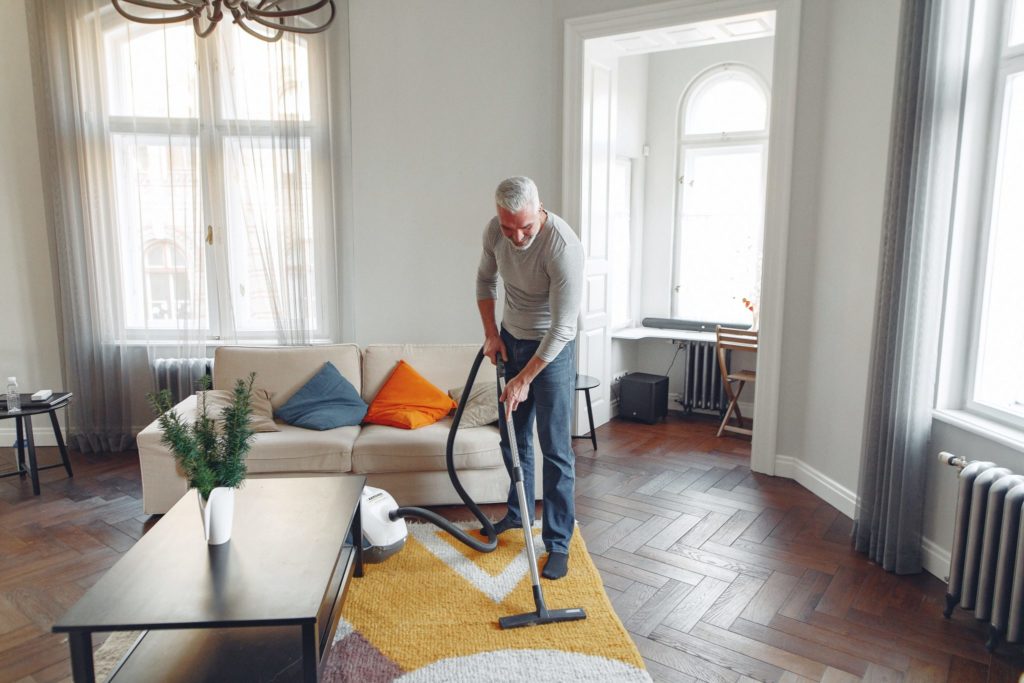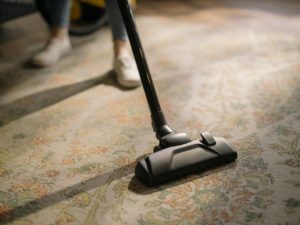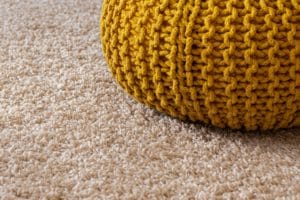Be honest – are you really vacuuming your home properly?
There’s no judgment here – when your list of chores is as long as your arm, it’s easy to cut corners. But if you’re (literally) cutting corners by not vacuuming your carpets and rugs properly, you could be cheating yourself into bigger problems in the long run.
As neat freaks and cleaning geeks, we’re ready and willing to give you our expert advice on how to vacuum in the way that you and your carpets deserve. If your home is in need of a little extra TLC, consider calling in the pros.
Read on for our perfect method and get ready to step up your vacuuming routine.

But why is vacuuming so important?
Vacuuming doesn’t just make your home look nice – it helps remove dirt, dust, and other allergens to create a healthy atmosphere, so you and your family can breathe easier.
It also helps maintain the quality of your carpets and rugs. When dirt builds up, it rubs against the fibres, wearing them down at a faster rate. Vacuuming regularly slows this process, protecting your investment over time.
How to vacuum the right way
And yes, there is a right way.
1. Start with the right gear
 When it comes to vacuuming, your machine matters. We’re not suggesting you need the highest spec model on the shelf, but there is a standard you should adhere to.
When it comes to vacuuming, your machine matters. We’re not suggesting you need the highest spec model on the shelf, but there is a standard you should adhere to.
Make sure you’re using a CRI-approved vacuum. These have all been independently tested using high calibre methods to measure soil removal, dust containment, and surface appearance.
Basically, you can rely on these vacuums to do a fantastic job at cleaning your home and purifying the atmosphere while also maintaining the quality of your carpet.
2. Use the right attachments
There’s a reason your vacuum comes with so many odds and ends – so take the time to get to know them!
Small attachments can be used to tackle your baseboards, stairs, and other hard-to-reach places. The upholstery attachment can be a great solution for your sofa and armchairs (just make sure to check the manufacturer guidelines first).
Be especially careful with rugs – we’ve seen countless expensive rugs that have been accidentally ruined by hungry vacuums. Always do your research on best practice before cleaning. If in doubt, contact us for advice!
A word about the beater bar…
The beater bar is the big rotating rod that spins rapidly. It shakes up carpet fibres to loosen dust and soil, so that it can be suctioned up.
But the beater bar isn’t for everyone – it can damage certain types of long carpets, loop carpets, and natural carpets by tangling the threads or destroying the fibres.
If you have different types of carpets and rugs in your home, be sure to check whether they should be exposed to the beater bar. Adjust the settings and the height of the vacuum accordingly.
3. Preparation is key
 We know you’re super excited to turn the vacuum on, but there are a few things you need to do first.
We know you’re super excited to turn the vacuum on, but there are a few things you need to do first.
Check and empty your vacuum’s filters and dust bag, to ensure it can operate at optimum performance.
We’ve all heard that unmistakable clattering sound when a coin (or something even more valuable) gets sucked up into your vacuum – save yourself the headache and walk through the area beforehand. Pick up any small items that might pose a threat.
4. Slow and steady
On your marks, get set… Pace yourself.
To get the best results, you’re going to have to take your time. The dance should go:
- Push the vacuum slowly forward in a straight line
- Pull it back slowly over the same strip of carpet
- Move over into a position that slightly overlaps the first strip
- Repeat until the area is covered
- Turn at a 90° angle and repeat the process in the other direction
5. Keep it up
Now you know what a proper vacuuming job looks like, there are no excuses – you’ve got to keep it up 1-3 times a week, depending on how active your home is. But don’t worry, you’re not alone – every 6 months, call in the pros for a comprehensive deep clean.
Together, we’ll keep your home looking and feeling amazing, exactly how you deserve it to be!
Request a Quote
We’ll be in contact with you shortly to give you an estimate.
